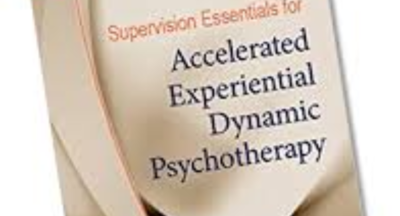
Accelerated Experiential Dynamic Psychotherapy: An Effective Approach to Emotional Healing
Introduction
Accelerated Experiential Dynamic Psychotherapy (AEDP) is a therapeutic approach that focuses on fostering emotional healing and transformation. It aims to help individuals identify and process deep-seated emotions and traumatic experiences, leading to lasting positive changes in their lives.
History of Accelerated Experiential Dynamic Psychotherapy
AEDP was developed by Dr. Diana Fosha in the 1990s. Drawing from various therapeutic modalities, including psychodynamic, experiential, and attachment theories, Dr. Fosha created a unique approach that emphasizes the importance of creating a safe and supportive therapeutic environment.
What Accelerated Experiential Dynamic Psychotherapy Practitioners Do
AEDP practitioners work closely with their clients to create a strong therapeutic alliance. They provide a safe and non-judgmental space where clients can explore and express their emotions freely. Through a combination of talk therapy, body awareness, and experiential techniques, practitioners help clients delve into their emotions, uncovering underlying patterns and facilitating healing.
Principles of Accelerated Experiential Dynamic Psychotherapy
AEDP is guided by several core principles:
- Emotional Transformation: AEDP focuses on transforming negative emotions into positive ones, allowing individuals to experience profound emotional healing.
- Healing Attachment Wounds: AEDP recognizes the significance of early attachment relationships and aims to address and heal any attachment wounds that may have occurred.
- Embracing and Processing Emotions: AEDP encourages clients to fully experience and process their emotions, helping them release emotional blockages and achieve emotional freedom.
- Creating a Secure Therapeutic Environment: AEDP practitioners prioritize creating a safe and supportive environment where clients can feel comfortable exploring their emotions and vulnerabilities.
Various Types of Accelerated Experiential Dynamic Psychotherapy
There are several different types of AEDP, each tailored to meet the unique needs of individuals:
- AEDP for Couples: This approach focuses on helping couples build secure and loving relationships by exploring and addressing emotional barriers within the partnership.
- AEDP for Trauma: This type of AEDP is specifically designed to help individuals who have experienced trauma. It aims to create a safe space for clients to process and heal from their traumatic experiences.
- AEDP for Anxiety and Depression: AEDP can be effective in treating anxiety and depression by helping individuals identify and address the underlying emotional causes of their symptoms.
Benefits of Accelerated Experiential Dynamic Psychotherapy
AEDP offers several benefits to individuals seeking emotional healing:
- Emotional Resilience: AEDP helps individuals develop emotional resilience, allowing them to navigate life’s challenges more effectively.
- Improved Relationships: By addressing attachment wounds and emotional barriers, AEDP can lead to improved relationships and deeper connections with others.
- Increased Self-Awareness: AEDP encourages self-reflection and introspection, leading to a greater understanding of one’s emotions and behaviors.
- Reduced Anxiety and Depression: AEDP can alleviate symptoms of anxiety and depression by addressing the underlying emotional causes.
Possible Treatments
AEDP can be used as a standalone treatment or in conjunction with other therapeutic approaches, depending on the individual’s needs. The duration of therapy varies depending on the complexity of the issues being addressed, and progress is typically monitored regularly to ensure the effectiveness of the treatment.
Conclusion
Accelerated Experiential Dynamic Psychotherapy is a powerful therapeutic approach that offers individuals the opportunity to heal and transform their emotional well-being. By providing a safe and supportive environment, AEDP practitioners facilitate the exploration and processing of deep-seated emotions, leading to lasting positive changes in clients’ lives.
Related Posts
What is CBT? A Comprehensive Guide to Cognitive Behavioral Therapy
-CLICK HERE TO LISTEN-NATIONAL ASSOCIATION OF CBT - AUDIO SELF -HELP SERIES...
Accelerated Experiential Dynamic Psychotherapy: An Effective Approach to Emotional Healing
Introduction Accelerated Experiential Dynamic Psychotherapy (AEDP) is a...
Understanding CBT and Core Beliefs: Types and Examples
https://www.youtube.com/watch?v=AhTdAU4LV6g What is CBT?Cognitive Behavioral...
Understanding Cognitive Behaviour Therapy and the Principle of Goal Orientation and Problem Focus
https://www.youtube.com/watch?v=u3aBwGxTtSE Cognitive Behaviour Therapy (CBT) is...





Hare Krishna,
AEDP designates accelerated experiential dynamic psychotherapy. It was developed by Dr Diana Fosha in 1990’s.
It inculcates theories from various therapeutic modalities like psychodynamic, attachment theory and experiential theories.
This therapy aids in emotional transformation, healing attachment wounds,embracing and processing emotions.
It is administered for couples, trauma,anxiety and depression.
It builds emotional resilience, improves relationships, increases self awareness and reduces anxiety and depression levels.